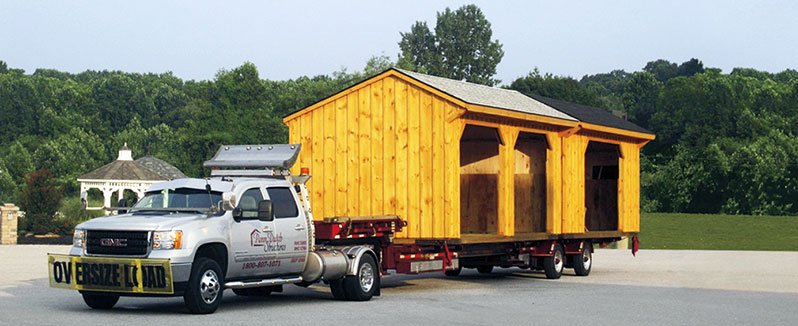
When you’re moving, there are plenty of things you’re ready to leave behind — unpleasant neighbors, living spaces that are too small, or your drafty basement. But, there are also things you don’t want to leave behind, including the shed, gazebo, swing set, or other outdoor structure that you love having in your backyard. With a little pre-planning and help from Penn Dutch Structures, outdoor structure relocation can easily be done, so you can enjoy them when you move into your new home as well.
Here is how you move a gazebo, shed, pergola or pavilion successfully to your new location.
1. Find Out If You Must Follow HOA Restrictions
Your first step is to find out if your new home is part of a Homeowners Association. If it is, you should look into the HOA bylaws to see if there are any restrictions on adding an outdoor structure to your property. Common HOA regulations concerning structures such as sheds, garages, gazebos, or swing sets include:
Size —
Size restrictions can limit the total square footage (ex: 150 sq ft.), dimensions (ex: 8’ x 10’), or percentage of land your structure covers (ex: no more than 1% of your property). Additionally, there may be maximum height limits for the side walls and roof.
Materials —
There may be limitations on the types of materials used in the construction of your shed or outdoor structure. Typically, wood, vinyl, or aluminum exteriors are acceptable, while all metal sheds usually are not permitted.
Appearance —
Depending on your HOA, there may also be regulations concerning the exterior colors, trim colors, roof shingles, and windows on your structure. You may be required to match your home’s exterior (in color and architectural style) as closely as possible. If you do not need to match your home, you may be asked to stick to an approved color palette.
2. Look for Obstacles On Your Property
Before you schedule your outdoor structure relocation, do a quick assessment of your new property. Look for any obstacles in your front yard or side yard that would encumber the moving processes. Access to the final installation site must be clear of:
- Narrow walkways or stairs
- Fences
- Shrubs or elaborate landscaping
- Low-hanging tree branches or power lines
3. Build a Stable Base
When you’re moving a horse barn, garage, or wood/vinyl gazebo you’ll need to build a stable base that your structure will rest on. It’s recommended that you use a layer of crushed stone as your base. Crushed stone is sturdier and more stable than other options, which means your structure won’t shift on its foundation over time.
A proper base allows for drainage and prevents moisture from building up underneath your structure. As rain falls from the edge of your structure’s roof, it deflects off the ground and splashes onto the sidewalls of the shed, causing mold and rot over time. When you prepare a base using stone, water is absorbed into the ground instead of splashing against your building.
Prepare your base using a layer of stone that is 4″- 8″ deep and covers an area at least one foot larger than your building in all directions. For a 10’ x 14’ shed, you would need a 12’ x 16’ stone base.
4. Schedule Your Outdoor Structure Relocation
Contact Penn Dutch Structures to schedule a relocation date. They will request photos of the structure you need to move. Here are a few other requirements for moving a structure:
- Your shed or gazebo will need to be emptied prior to relocation.
- At both your current home and your new home, there will need to be clear access for a full-size pickup truck and trailer.
- Structures that exceed 11’ tall will not be able to be relocated.
Are you planning a move? Are you moving a shed, swing set, or other structure along with you? Trust Penn Dutch Structures for a safe and easy move. Contact us today.
Are you planning a move?
Are you moving a shed, swing set, or other structure along with you? Trust Penn Dutch Structures for a safe and easy move.

